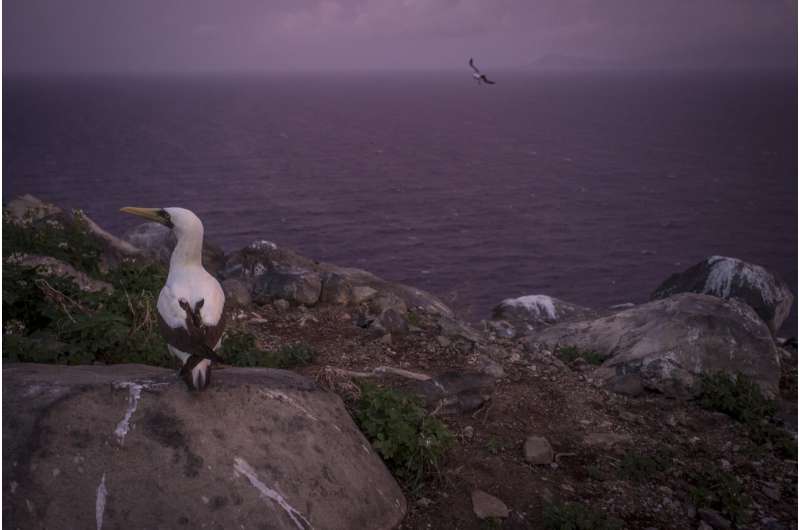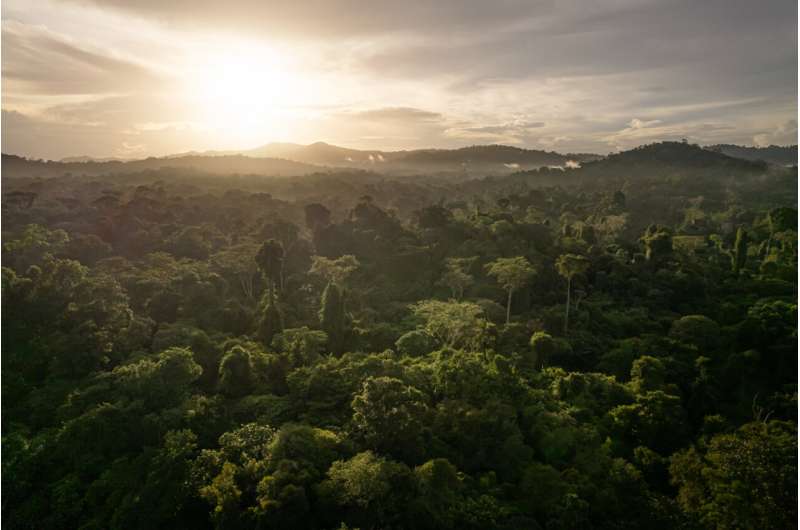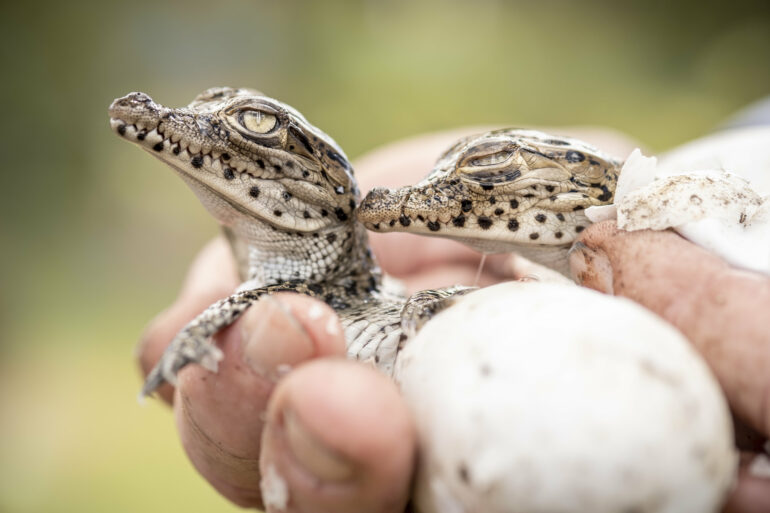A study published April 25, in the journal Science provides the strongest evidence to date that not only is nature conservation successful, but that scaling conservation interventions up would be transformational for halting and reversing biodiversity loss—a crisis that can lead to ecosystem collapses and a planet less able to support life—and reducing the effects of climate change.
The findings of this first-ever comprehensive meta-analysis of the impact of conservation action are crucial as more than 44,000 species are documented as being at risk of extinction, with tremendous consequences for the ecosystems that stabilize the climate and that provide billions of people around the world with clean water, livelihoods, homes, and cultural preservation, among other ecosystem services.
Governments recently adopted new global targets to halt and reverse biodiversity loss, making it even more critical to understand whether conservation interventions are working.
“If you look only at the trend of species declines, it would be easy to think that we’re failing to protect biodiversity, but you would not be looking at the full picture,” said Penny Langhammer, lead author of the study and executive vice president of Re:wild.
“What we show with this paper is that conservation is, in fact, working to halt and reverse biodiversity loss. It is clear that conservation must be prioritized and receive significant additional resources and political support globally, while we simultaneously address the systemic drivers of biodiversity loss, such as unsustainable consumption and production.”
Although many studies look at individual conservation projects and interventions and their impact compared with no action taken, these papers have never been pulled into a single analysis to see how and whether conservation action is working overall.
The co-authors conducted the first-ever meta-analysis of 186 studies, including 665 trials, that looked at the impact of a wide range of conservation interventions globally, and over time, compared to what would have happened without those interventions. The studies covered over a century of conservation action and evaluated actions targeting different levels of biodiversity—species, ecosystems and genetic diversity.
The meta-analysis found that conservation actions—including the establishment and management of protected areas, the eradication and control of invasive species, the sustainable management of ecosystems, habitat loss reduction and restoration—improved the state of biodiversity or slowed its decline in the majority of cases (66%) compared with no action taken at all. And when conservation interventions work, the paper’s co-authors found that they are highly effective.
For example:
Management of invasive and problematic native predators on two of Florida’s barrier islands, Cayo Costa and North Captiva, resulted in an immediate and substantial improvement in nesting success by loggerhead turtles and least terns, especially compared with other barrier islands where no predator management was applied.
In the Congo Basin, deforestation was 74% lower in logging concessions under a Forest Management Plan (FMP) compared with concessions without an FMP.
Protected areas and Indigenous lands were shown to significantly reduce both deforestation rate and fire density in the Brazilian Amazon. Deforestation was 1.7 to 20 times higher and human-caused fires occurred four to nine times more frequently outside the reserve perimeters compared with inside.
Captive breeding and release boosted the natural population of Chinook salmon in the Salmon River basin of central Idaho with minimal negative impacts on the wild population. On average, fish taken into the hatchery produced 4.7 times more adult offspring and 1.3 times more adult second generation offspring than naturally reproducing fish.

Masked Booby on Redonda Island. This species has benefited tremendously from the removal of invasive predators from the island, one of the key conservation actions included in the meta-analysis. © Robin Moore, Re:wild
“Our study shows that when conservation actions work, they really work. In other words, they often lead to outcomes for biodiversity that are not just a little bit better than doing nothing at all, but many times greater,” said Jake Bicknell, co-author of the paper and a conservation scientist at DICE, University of Kent.
“For instance, putting measures in place to boost the population size of an endangered species has often seen their numbers increase substantially. This effect has been mirrored across a large proportion of the case studies we looked at.”
Even in the minority of cases where conservation actions did not succeed in recovering or slowing the decline of the species or ecosystems that they were targeting compared with taking no action, conservationists benefited from the knowledge gained and were able to refine their methods. For example, in India the physical removal of invasive algae caused the spread of the algae elsewhere because the process broke the algae into many pieces, enabling their dispersal. Conservationists could now implement a different strategy to remove the algae that is more likely to be successful.
This might also explain why the co-authors found a correlation between more recent conservation interventions and positive outcomes for biodiversity—conservation is likely getting more effective over time. Other potential reasons for this correlation include an increase in funding and more targeted interventions.
In some other cases where the conservation action did not succeed in benefiting the target biodiversity compared with no action at all, other native species benefited unintentionally instead. For example, seahorse abundance was lower in protected sites because marine protected areas increase the abundance of seahorse predators, including octopus.
“It would be too easy to lose any sense of optimism in the face of ongoing biodiversity declines,” said study co-author and Associate Professor Joseph Bull, from the University of Oxford’s department of biology. “However, our results clearly show that there is room for hope. Conservation interventions seemed to be an improvement on inaction most of the time; and when they were not, the losses were comparatively limited.”

One of the studies in the meta-analysis looked at a nationwide REDD+ program In Guyana that reduced tree cover loss by 35%, which is equivalent to 12.8 million tons of avoided carbon emissions. © Andrew Snyder, Re:wild
More than half of the world’s GDP, almost $44 trillion, is moderately or highly dependent on nature.
According to previous studies, a comprehensive global conservation program would require an investment of between US$178 billion and US$524 billion, focused primarily in countries with particularly high levels of biodiversity. To put this in perspective, in 2022, global fossil fuel handouts—which are destructive to nature—were US$7 trillion.
This is 13 times the highest amount needed annually to protect and restore the planet. Today more than US$121 billion is invested annually into conservation worldwide, and previous studies have found the cost-benefit ratio of an effective global program for the conservation of the wild is at least 1:100.
“Conservation action works—this is what the science clearly shows us,” said Claude Gascon, co-author and director of strategy and operations at the Global Environment Facility.
“It is also evident that to ensure that positive effects last, we need to invest more in nature and continue doing so in a sustained way. This study comes at a critical time where the world has agreed on ambitious and needed global biodiversity targets that will require conservation action at an entirely new scale. Achieving this is not only possible, it is well within our grasp as long as it is appropriately prioritized.”
The paper also argues that there must be more investment specifically in the effective management of protected areas, which remain the cornerstone for many conservation actions. Consistent with other studies, this study finds that protected areas work very well on the whole. And what other studies have shown is that when protected areas are not working, it is typically the result of a lack of effective management and adequate resourcing. Protected areas will be even more effective at reducing biodiversity loss if they are well-resourced and well-managed.
Moving forward, the study’s co-authors call for more and rigorous studies that look at the impact of conservation action versus inaction for a wider range of conservation interventions, such as those that look at the effectiveness of pollution control, climate change adaptation, and the sustainable use of species, and in more countries.
“For more than 75 years, IUCN has advanced the importance of sharing conservation practice globally,” said Grethel Aguilar, IUCN director general.
“This paper has analyzed conservation outcomes at a level as rigorous as in applied disciplines like medicine and engineering—showing genuine impact and thus guiding the transformative change needed to safeguard nature at scale around the world. It shows that nature conservation truly works, from the species to the ecosystem levels across all continents. This analysis, led by Re:wild in collaboration with many IUCN Members, Commission experts, and staff, stands to usher in a new era in conservation practice.”
More information:
Penny F. Langhammer, The positive impact of conservation action, Science (2024). DOI: 10.1126/science.adj6598. www.science.org/doi/10.1126/science.adj6598
Citation:
First-of-its-kind study shows that conservation actions are effective at halting and reversing biodiversity loss (2024, April 25)
